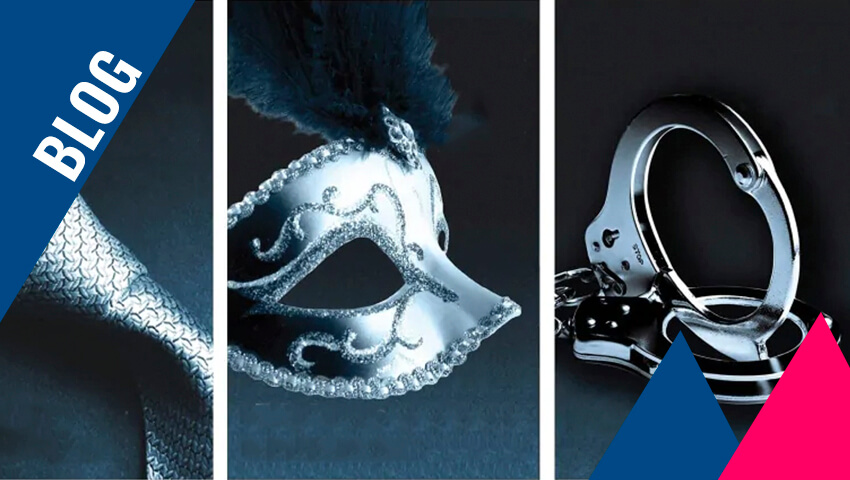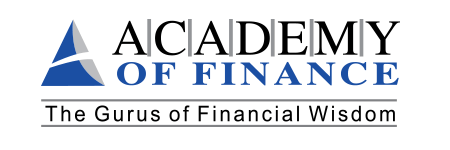
The Birth of An Alternate Reality – 50 Shades of New Normal

The Birth Of An Alternate Reality
Introduction
The ‘New Normal” seemed to have happened overnight with the advent of the coronavirus. Whilst there were signs and warnings that major disruption was around the corner before the COVID-19 virus hit us; these were doomsday scenarios of the future, rather than one that required immediate crisis management today.
Climate change was the biggest of the pre-COVID-19 doomsday scenarios. The Paris Accord gave us hope that if all the countries pulled together and reduced our greenhouse gas emissions, we could keep global warming below 2°C. The other worry was a potential Nuclear War starting in the Middle-East, but then President Obama had brokered the Iran Nuclear Agreement, to the collective relief of the whole world. The Economists and Bankers worried about the alternative world of cryptocurrencies such as Bitcoin, that could use Blockchain technologies to by-pass the traditional banking systems. Facebook, the massive social network, along with 27 other partners, were touting the Libra digital coin and the corresponding digital wallet, Calibra, as a way to make sending payments around the world as easy as it is to send a photo.
Generational Change
Before the coronavirus pandemic, what is called the ’New Normal’ today, was simply called “generational change”. Children watched ‘Daniel Tiger’ and ‘Peppa Pig’ instead of Mickey Mouse or Donald Duck. The superhero comic books already had ‘Thor’ the Norse God of Thunder as a female; and Superman had died after battle with the villain ‘Doomsday’. Out in space Pluto was no longer a planet; and Elon Musk had a ‘Tesla’ car orbiting the Sun.
On the political front, we had populist dictators running so called democracies; but the scale of destruction that they would later cause in their mismanagement of their own country’s pandemic response was not on anyone’s radar. In Europe, Brexit happened on January 31, 2020, bringing to an end 47 years of British membership of the EU and the institutions that preceded it. In Asia and Africa, China’s global intentions were fairly transparent with their ‘Belt and Road Initiative’; and its claims to disputed islands in the South China seas was already causing significant tensions. The Golden Arches Theory of Conflict Prevention where the author stated that no two countries that had a McDonalds Restaurant would go to war with each other because of the power of globalisation was being severely tested.[i] Tensions along the India-Pakistan border had resulted in many skirmishes, but no official war had actually broken out. Both countries have McDonalds restaurants, so war was prevented by business interests just as the theory had predicted.
During the COVID-19 pandemic tensions heightened, with troops in the India-China Himalayan border actually killing each other with rocks. Thankfully, no weapons were discharged. Globally, tensions today are at a fever pitch, with USA and Australia accusing China of sophisticated ‘hacking’ on a large scale. Chinese companies such as Huawei were being blocked from being involved in sensitive IT networks; and TikTok was being accused of being an arm of the Chinese government, with a USA threat to block it, or take the company over.
Business leaders appear to have been effectively silenced by the increasingly hostile posturing of the political leaders of the USA, China, UK and Australia. It was only when President Trump announced that the USA was going to ban WeChat; was there some push-back from over a dozen large US businesses doing business in China, where the ubiquitous app is used by 1.2b people globally. Business leaders around the world need a more proactive strategy to safeguard their interests, as a hostile ‘trade war’ leaves no casualties.
On the Social front major changes were also happening before the COVID-19; but the pandemic has exacerbated these issues. The global #metoo movement brought down some big names, and companies had to rethink their sexual harassment policies. Although the movement is primarily about women who have been harassed by men; the organisational hierarchies of many companies that have women in positions of authority and power, could soon be subjected to a #MENtoo movement.
The ‘Black Lives Matter’ movement with the use of the hashtag #BlackLivesMatter, began on social media in July 2013, after the acquittal of George Zimmerman in the shooting death of African-American teen Trayvon Martin. The movement became nationally recognized in the USA for street demonstrations following the 2014 deaths of two more African Americans. During the COVID-19 pandemic the movement got supercharged and went global, after a white police officer, Derek Chauvin, knelt on African-American George Floyd’s neck for nearly eight minutes and choked him to death. There were demonstrations in almost every country from Europe to Asia to Africa. Many participated in the marches, not only in support of the movement, but also as a release from their ‘lockdown’ due to COVID-19. During the protest marches many of the statues of those considered as slave traders and racists were attacked and either defaced or damaged. There were even calls to ‘defund’ the police.
President Obama in 2019 asked people to be ‘Woke’, which is now increasingly used as a byword for ‘social awareness’. Such awareness has resulted in previously published literary and artistic works being either ‘censored’ on a piece-meal basis; or the entire works of that author, director or entertainer being ‘cancelled’. This has significant consequences for business. For example, a book published in an earlier generation might suddenly be ‘censored’ because of language, racial characterization, or depiction of drug use, social class, or sexual orientation of the characters, or other social differences that are viewed by today’s moralists as harmful to the readers. Such a posthumously censored book will not only cease accumulating royalties, but worse still be subject to costly litigations against the author’s estate. A body of work that is ‘cancelled’ entirely for whatever reason, loses all its value. There was a move to cancel all of Michael Jackson’s music after child-abuse accusations by the victims in the ‘Leaving Neverland’ program aired on HBO; but Billboard said that his work was too extensive to ‘cancel’.
The Big Bang of the New Normal
The exact date the world changed dramatically is unclear.
On 31 Dec 2019, the World Health Organisation (WHO)’s Country Office in the People’s Republic of China picked up a media statement by the Wuhan Municipal Health Commission from their website on cases of ‘viral pneumonia’ in Wuhan. It was only on 27 January 2020, that the WHO Regional Director for South-East Asia issued a press release that urged countries in the Region to focus on their readiness for the rapid detection of imported cases and prevention of further spread. Finally, on 11 March 2020 WHO announced the COVID-19 outbreak as a pandemic. By then, the global network of international travel had taken the virus to all corners of the Earth.
Since then our “New Normal” has had many shades such as: Flattening the Curve; Social Distancing; Home Schooling; Travel Restrictions; Self-Quarantine; Lockdowns; Hot Spots; Compulsory Face Masks; Contact Tracing, Intensive Care Units (ICU), Ventilators and Vaccines.[ii]
We also came to understand the importance of millions of essential ‘Front-Line Workers’ who, despite the hardships and health risks, continued to do their jobs during the COVID-19 pandemic. These hardworking heroes continued keeping their country’s citizens fed, picking up their garbage, providing them life-saving medicine, delivering their groceries and packages, preparing and/or delivering their food, cleaning their hospitals, caring for those who are most vulnerable, and keeping us safe—often while earning low wages and few benefits.
In addition to direct health care workers such as medical doctors and nurses, such frontline workers include health care support workers such as orderlies and phlebotomists; direct care workers such as home health and personal care aides; and health care service workers such as housekeepers and cooks. Also, those who kept the supply lines working, such as truck drivers, taxi drivers and supermarket staff who diligently controlled shoppers to ensure that a repetition of the “Great Toilet Roll Shortage of March 2020” and similar panic buying and hoarding by customers did not happen.
The pandemic has exposed and accentuated inequities in the economic system. Those in white-collar jobs can work from home, but “essential” front-line workers must continue to work, and are therefore at greater risk of contracting COVID-19, all the while for poor pay. Those in industries such as hospitality (disproportionately young, female and with black or brown skin) have borne the brunt of job losses.
The lockdowns of entire cities created a ‘new normal’ for our access to news and entertainment. Streaming services such a Netflix and YouTube had a fifty-fold increase in traffic; as did volume of postings on social media sites such as Facebook; which also had a spike in posting of ‘Fake News’ and ‘Alternate Facts’. These often gave confusing, conflicting, non-scientific information about COVID-19 and its origins, treatments and conspiracies. There was even conflicting advice as to the usefulness of wearing masks in publics, uploaded or posted sometimes by those claiming to be medical professionals. Sometimes, extremely dangerous utterances such as the advice to use Bleach to prevent COVID-19, was disseminated around the world at lightning speed. Facebook morphing into ‘Fakebook’, was another virulent shade of the ‘new normal’.
The greatest short-term impact for most companies has been the sudden transition to a “Work from Home (WFH)” environment. This ‘new normal’ of a WFH culture has raised the multiple issues that come with it, such as: sharing excel files through multiple locations; boosting internet bandwidth; factoring home office costs; building corporate networks; ensuring information security and data protection and consider workplace safety issue as all homes becomes places of work.[iii]
In the corporate world, the big winner has been Zoom, one of the dozens of video conferencing services. Zoom has risen to the top, thanks to intense separation measures, a profound resonance within this new social distancing culture and the new WFH environment. A ‘Zoom culture’ has become one major shade of the new normal, with daily downloads of the Zoom app have increased 30x since COVID-19; and daily users have spiked to 200 million in March, up from 10 million in December. Zoom is not only a big winner in business communications, but also with millions of people being forced to stay home to help stop the spread of COVID-19; with many finding creative ways to virtually stay social through happy hours, trivia nights and birthday parties.[iv]
However, this new WFH culture — where either multiple members of a family maybe working from home, or when some are working whilst others a caring for young children or supervising home schooling — has created added pressures on family dynamics. Whilst some have taken this new normal to get healthier by walking and exercising; other have turned into couch potatoes watching endless television and being sucked down the You Tube Rabbit Hole.[v] Also, whilst the WFH culture has enabled some to be closer to their immediate family and enjoy this new normal, the increased incidence of family violence reported globally tells another story.[vi]
Summary
Prior to the COVID-19 pandemic, significant changes were already happening that altered our view of the world, such as: The Rise of Populism; Brexit; Tension in South China Seas; Golden Arches Theory; State Based Hacking; Huawei and TikTok; #MeToo; WOKE; Censored; Cancelled; Black Lives Matter; Defacing Historical Statues; Defund the Police; Blockchain; Cryptocurrency and Libra. All These changes were supercharged during the COVID-19 pandemic, creating lasting shades of ‘new normal’.
Further shades that were directly related to reducing COVID-19 infections were added to our regular lexicon, such as: Flattening the Curve; Social Distancing; Home Schooling; Travel Restrictions; Self-Quarantine; Lockdowns; Facial Masks; Hot Spots; Contact Tracing; ICU; Ventilators and Vaccines.
Indirect shades of ‘new normal’ due to the virus included: Front-Line Workers; Panic Buying & Hoarding; Netflix and the You Tube Hole; Fake News and Alternate Facts (Fakebook); Untested Medical Remedies; Working from Home (WFH); Zoom meetings and changes in Family Dynamics.
In all, 35 shades of the ‘New Normal’.
In the next part, 9 further shades in the new normal of ‘Crazynomics’ will be covered.
Article by
Prof Janek Ratnatunga

Professor Janek Ratnatunga is CEO of the Institute of Certified Management Accountants. He has held appointments at the University of Melbourne, Monash University and the Australian National University in Australia; and the Universities of Washington, Richmond and Rhode Island in the USA. Prior to his academic career he worked with KPMG.
